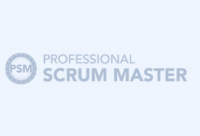

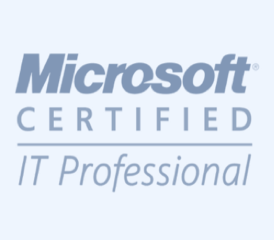

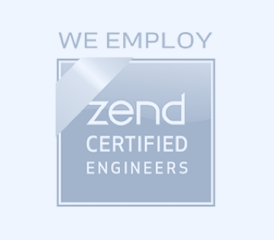

What Is Virtual Reality Prototyping
By employing interactive 3D modeling, designers and developers can quickly understand how users will interact with the simulated objects in different ways. They can easily test or improve prototypes from any side or distance in a simulated environment. So, there is no need to build physical models that could be expensive and time-consuming. This process provides a better understanding of how the product or system will behave in the real world, making it possible to make any necessary adjustments before bringing it to market. Creating numerous versions of scenarios or use cases for a product is much easier via VR than traditional methods.
Virtual Reality Prototyping Solutions
When creating a VR application, it is critical to see the mock-ups in a VR headset as soon as possible. There are several approaches to virtual reality prototyping solutions, depending on the functionality, goals, and complexity of the project.
VR storyboard
VR storyboards are graphical scripts for developing user scenarios in the early stages. Developers work out the interaction scenario by describing each scene. Such storyboards show how the user interacts with objects and achieves goals, without going into details. To avoid mistakes at later stages of the development process, user visibility and accessibility can be considered at the storyboard stage.
Interactive models
Most interaction systems need to be tested with significant interactivity in the prototype. Using interactive prototypes, it is possible to test simple solutions that are based on the movement of the user’s gaze and movements within the location in the virtual environment. There are various ways to implement this. You can build prototypes right in the environment in which the project is created, like in Unity or Unreal Engine. A-Frame, for example, is a service that can be used for prototyping with a virtual reality view.
Panoramic prototypes
360° panoramas are projections of spherical images onto a plane that can be quickly viewed with VR glasses or a 360° player. Panorama-based solutions are efficient for understanding how various interface elements or objects are positioned in the scene while viewing the environment in 360-degree formats. Panoramic models are used when there is not enough time for hypothesis testing and it is not possible to go deeply into software development. 3D artists can create panoramic prototypes using 3D graphics editors that allow them to be rendered as a spherical panorama. Such prototypes are useful to quickly check the position of the camera in the scene or the scale of the environment. The concept can be viewed on a computer in a 360° player, such as the GoPro VR Player, in the browser via vizor.io, in glasses via the browser and vizor, or in any application for viewing panoramas in VR glasses.
Complex VR prototyping
VR prototyping provides a virtual environment and modeling tools for turning ideas into functional prototypes. Computer-processed images, virtual space sketches, environment elements, and interface solutions are created right inside the virtual environment. The complexity of the developed software depends on the number of interaction scenarios, targeted devices, and goal of the project. Virtual reality prototyping allows designers and developers to rapidly iterate, check interactions, and picture 3D environments with the use of real-time visualization tools such as Unity, Unreal Engine, and other game engines. It opens up possibilities for remote collaboration among teams located around the world by allowing them to work together on individual project iterations. VR helps to correlate scales and proportions, functionality, and the position of the objects relative to each other and the user.
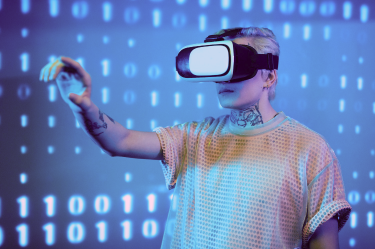
Get Your VR Prototype For Free
Just perform 4 easy steps and get your cutting-edge custom VR experience
Why Choose HQSoftware for VR Prototyping?
HQSoftware offers a wide range of services, including consulting, strategy formation, prototyping, 3D modeling, and the creation of unique software. Check out the benefits of VR prototyping with HQSoftware.
-
Education
Simulations of education labs, AR/VR tutorials, virtual trips, recreations of historical scenes.
-
Healthcare
Safe AR/VR environments for students to learn, AR-based interfaces for medical equipment.
-
Real estate
Virtual guided tours around buildings with interactive 3D objects superimposed over a physical scene in real time.
-
Retail
Collection showcasing, virtual dressing rooms, virtual assistants, in-store navigation.
-
Manufacturing
Interactive guides to help train employees, test and maintain equipment, build prototypes to evaluate new components.
Industries That Use VR for Prototyping
Using virtual reality for prototyping is increasingly popular in many industries, as it provides an immersive environment to explore new ideas. Using VR allows designers to refine their concepts quickly and accurately, saving time on high-cost iterations. Virtual reality has become valuable for many industries in their prototyping processes.
Automotive
In the automobile industry, VR can be used to design cars more efficiently, requiring fewer changes to physical prototypes afterward. As well, it allows for more accurate testing of new scenario designs. For example, designers can test how a car reacts to different driver inputs or driving conditions.
Aerospace and Aviation
VR prototyping in aerospace and aviation engineering helps in the design of flight simulators, aircraft, and spacecraft. This can eventually save a lot of time and money, as it can identify potential problems early on. This kind of testing would be difficult or sometimes impossible to do with physical prototypes.
Healthcare
Healthcare networks and medical device manufacturers use virtual prototyping for creating training simulations and technical medical equipment. VR prototyping of training tools helps medical professionals enhance their practical skills by recreating scenarios of various critical situations in interactive environments.
Education
Virtual reality prototyping contributes to education by creating immersive training, interactive lessons, and prototypes of expensive lab equipment. Using VR prototypes, educators can create a personalized learning experience for each student, experiment with different training scenarios, and test concepts.
Real Estate
The advantage of VR prototyping in real estate is its ability to simulate scenarios for building houses, facilities, and other premises with greater accuracy compared to traditional methods like 2D drawings or 3D models.
Gaming development
For the gaming industry, VR prototyping allows designers and developers to test and enhance gameplay ideas without having to build a finished product or write a large amount of code every time they want something to change.
Construction
Construction sectors use virtual reality prototyping in architectural renderings. VR is a powerful tool for designers to create and explore simulated constructions with unprecedented detail.
Design of Consumer Products
Virtual reality for prototyping consumer products helps to design tech gadgets, household appliances, communication devices, and entertainment-related products.
Manufacturing
Using VR prototyping, engineers can build and test complex manufacturing systems. This can help them identify potential machine problems and design scenarios for multiple manufacturing processes before they are put into production. For example, monitoring production lines with a minimum of human intervention.
Retail
Virtual shops, 3D product catalogs, and VR-based branding materials are used to improve the shopping experience via VR interactions. Here, VR prototyping gives customers a realistic view of products and provides virtual try-ons, making it easier for them to explore models.
The Technology Stack of VR Prototyping Software
Technology stack for VR prototyping
| Technologies, frameworks and libraries |
Unity, Unreal Engine, Oculus SDK, Oculus Quest 1,2, iOS/Android SDK, Web VR, React VR, Google VR |
| Front-end | HTML, JavaScript, Vue js, Angular, React, C++, C# |
| Back-end |
Python, Java, .NET, Java, Go, Node.js, PHP |
| Databases and cloud services |
MySQL, Microsoft SQL Server, Azure SQL Database, Oracle, PostgreSQL, MongoDB Google Cloud Platform, Microsoft Azure, Amazon Web Services |
| 2D/3D design |
Autodesk Maya, Blender, Autodesk 3ds Max, Substance Painter, Photoshop |
| VR Headsets |
Google Cardboard/Daydream, PlayStation VR, Oculus, VIVE |
VR Prototyping Software Costs
The cost of VR prototyping software depends on the architecture of the prototyping models, the number of scenarios required, and the type of hardware provided. HQSoftware considers the following factors when calculating software development costs:
Type of Hardware
Popular VR platforms include Oculus, Google Cardboard, VIVE, Valve Index, and a standalone HMD: Lenovo Mirage Solo. And there are more possible choices. HQSoftware can assist you by providing market research analysis and identifying your target consumers, to choose the best hardware. Our experienced specialists can define a development and implementation plan, build a project roadmap, and elaborate on how your company will achieve a competitive advantage. We can help you optimize your budget, minimize additional risks, and find the best solution for your product.
Architecture of 3D models
Simple photo 360C°-format and video settings are much cheaper and require less designer work. Interactive volume models imply movements within the location and detailed attributes, but this needs additional time and resources for development. Complex computer-processed VR prototypes are the most expensive models. The number and complexity of interaction scenarios are important factors for pricing. For example, such prototypes are widely used for simulations that help engineers during complex modeling in mechanical or aerospace applications.
Operational Services
Here, price depends on the type of targeted devices and the cloud provider’s services. The cheapest VR applications, using simple glasses, will cost up to $10,000. Prices for more complex apps, including online shops that let you display objects in three dimensions, range from $10,000 to $50,000. The most difficult applications to create can take months to complete and cost $50,000+. These include apps for the healthcare, aerospace, or real estate industries, such as those offering virtual property tours.
HQSoftware Awards
Mastering skills above & beyond

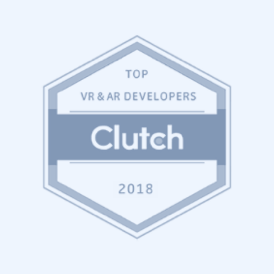











FAQ
What is VR prototyping?
Can you design in VR?
How much does VR prototyping software cost?
How long does it take to make a VR prototype?
What are the best tools for VR prototyping?
We are open to seeing your business needs and determining the best solution. Complete this form, and receive a free personalized proposal from your dedicated manager.

Sergei Vardomatski
Founder

